What Is A Rainforest?
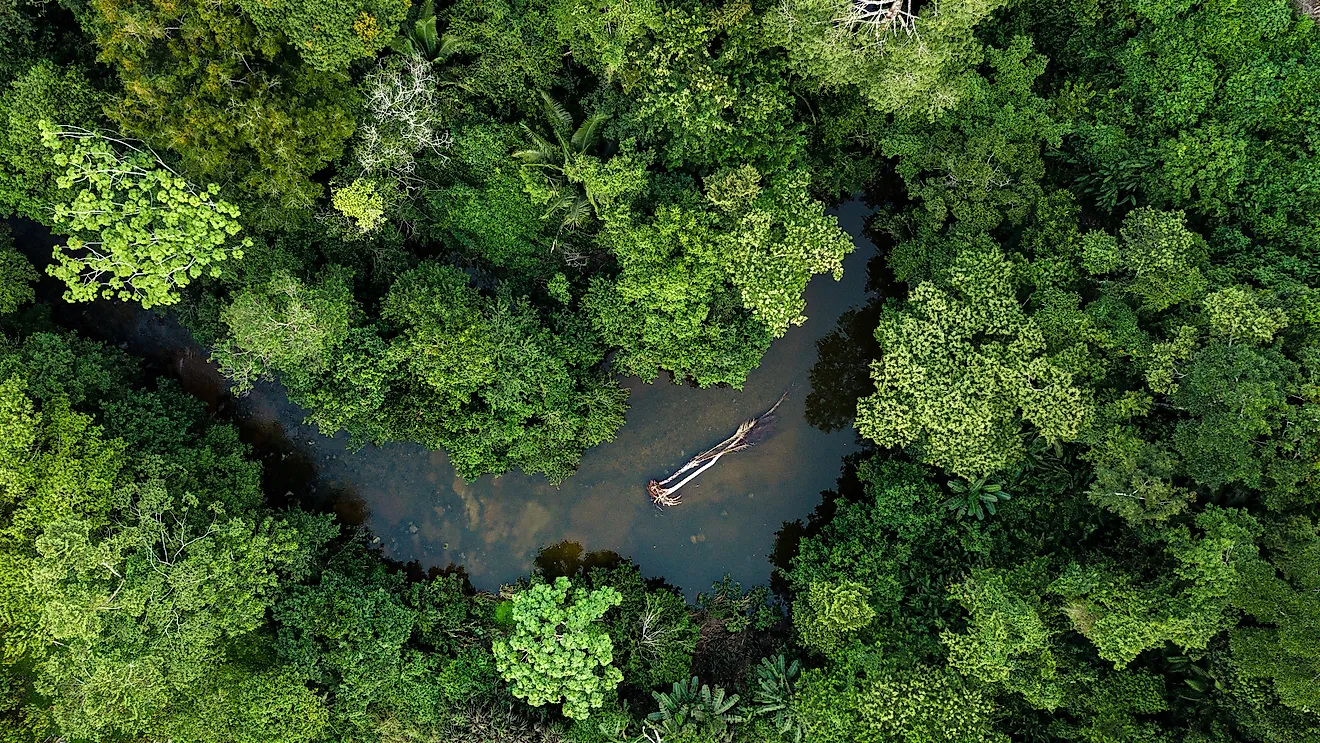
Nature is beautiful. Being surrounded by greenery and towering trees instills a sense of peace and majesty that can't be matched by many things in life. High on this list of serene beauty are rainforests, some of Earth's oldest living ecosystems.
These amazing densely habituated areas cover only 6% of the world's surface but contain more than half of the species of plants and animals on this planet. This perfectly illustrates how important and varied they are.
Compared to other forested areas, they are unique for their climate, specifically the amount of water they receive in a given year. This stand-out aspect also means that the animals and botany within must adapt to the environment, and as a result, it's possible to see many specialized organisms that couldn't exist anywhere else. If you ever have the chance, the world's rainforests are a must-visit locale.
Contents:
- What Is A Rainforest?
- The Layers Of A Rainforest
- Where Are Rainforests Found?
- Types Of Rainforests
- Protecting The World's Rainforest
What Is A Rainforest?
A rainforest is defined by the fact that it contains many large evergreen trees that never lose their leaves, and by the high amount of rainfall it receives. Specifically, to be classed as a rainforest, the area must receive continuous and heavy rainfall, reaching a range of between 98 and 177 inches in a year.
However, definitions can vary by region with temperate rainforests also being classed by the temperature they are, with an expected mean annual temperature of between 39 and 56 degrees Fahrenheit.
These ecological dreams are have been around for millions of years, with some of the older ones existing since at least 70 million years ago. They are complicated systems filled with diverse wildlife and once dominated 14% of the world's surface, though they now only cover a third of that area.

In fact, a single 4-square-mile patch of rainforest can have up to 1,500 blooming plants, 750 variations of trees, 400 species of birds, and 15 classes of butterflies.
Even now, it is estimated that millions of different types of insects, plants, and microorganisms remain undiscovered within the leafy boughs of these rainforests.
This extreme biodiversity is critical to the health of humans and the planet. On top of helping to control the currently unstable climate, they also produce a variety of everyday products like chocolate, sugar, and certain medicines. Rainforests have sometimes been referred to as the world's largest pharmacy because over 25% of natural medicines have been discovered in this area.
However, overly ambitious industrial and agriculture processes have contributed to damaging the health of rainforests, with many organizations and individuals springing up to form groups dedicated to preserving these essential but easily disrupted zones.
This is important too, as rainforests are responsible for a solid 28% of the world's oxygen turnover, pulling out large amounts of carbon dioxide from the air, which would otherwise contribute to the greenhouse warming effect currently happening across the globe.
Rainforests are also often dimly light, with undergrowth—meaning the vegetation in the lower area of the forest—often blanketing out the sun and causing there to be minimal illumination at the ground level. In some cases, if the canopy of leaves is reduced or destroyed, the ground beneath can soon become taken over by a dense and intricate tangle of vines, shrubs, and small trees, forming what is known as a jungle.
Sometimes the term "jungle" is used to apply to tropical rainforests overall.
The Layers Of A Rainforest
Most rainforests are split up into four distinct layers. Each of these parts is defined by a unique set of characteristics that vary based on levels of sunlight, air circulation, and water. This article will go through them from the top down.
These elements are :
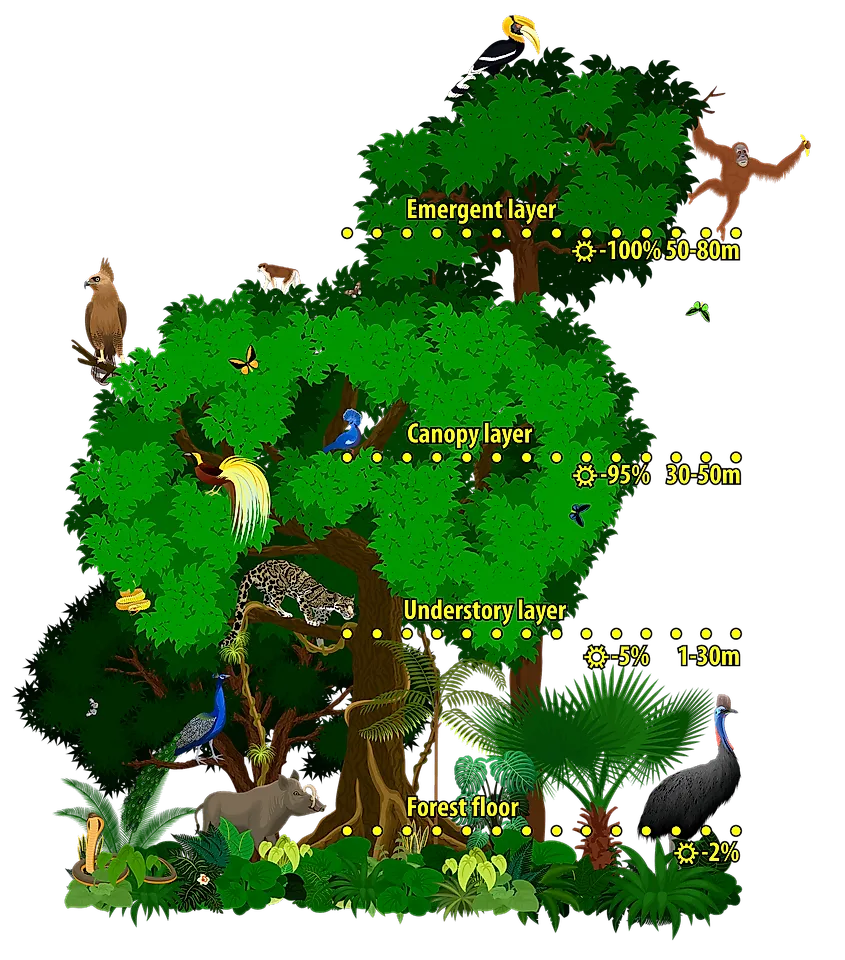
1. Emergent Layer
The outermost layer of the rainforest is the emergent layer. Here it is where the massive trees, sometimes stretching up to 200 feet, control the skyline. Foliage on the tree trunks tends to be minimal and thin but spread wide as the trees reach their sunny upper layer, where they can properly absorb nutrition from the light of the sun.
Smaller, waxy leaves in the emergent layer help the trees to hold on to water during long dry periods or seasons with minimal rain. As well, small seeds on this layer are exposed to strong winds that help carry them away to propagate elsewhere.
The emergent layer is filled with flying and gliding animals, or otherwise small creatures that can rest on the thin layers up top. These include bats, birds, butterflies, and gliders.
2. Canopy Layer
Below the emergent layer is the canopy layer, a deep area, that is approximately 20 feet thick. This interconnected network of branches and vegetation forms a sort of roof over the remaining layers.
The canopy excludes wind, rainfall, and sunlight, in the process creating a moist, quiet, and poorly light environment below. Trees in this layer feature glossy leaves with sharp tips that repel water.
Since this layer can't rely on wind to blow away its seeds, fruit is much more common. These sweet food items attract animals who eat them and then discard their seeds across the forest floor. Because of food availability, more animals can be found here than anywhere else in the entire rainforest.
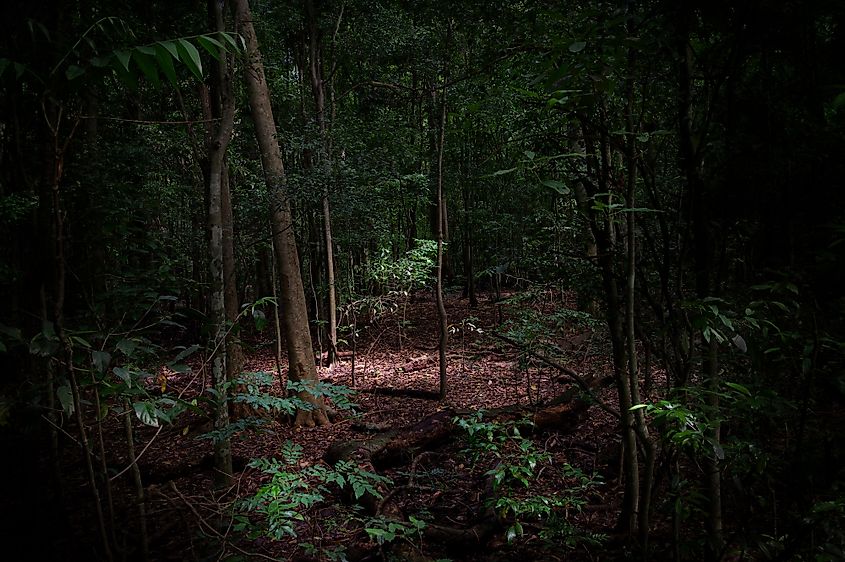
The lower stories of a rainforest a extremely dimly lit as most of the sunlight is blocked by the upper layers. Image credit: Andreas Tychon/Shutterstock.com
3. Understory Layer
Next is the understory layer, several feet further down from the canopy. It's even darker, increasingly humid, and much quieter.
Plants here have larger leaves, a requirement to catch the reduced amount of sunlight that gets to this layer. The plants here also tend to feature large and bright flowers, like the strong-smelling orchids. As a result, they attract pollinators who can help spread their seed.
Many animals in this area take advantage of the dim lighting for camouflage.
4. Forest Floor
The last layer is the forest floor. It is the least lit of all the areas, with few plants and quickly decaying leaves. It's here where decomposers like slugs, worms, and other creepy crawlies can be found.
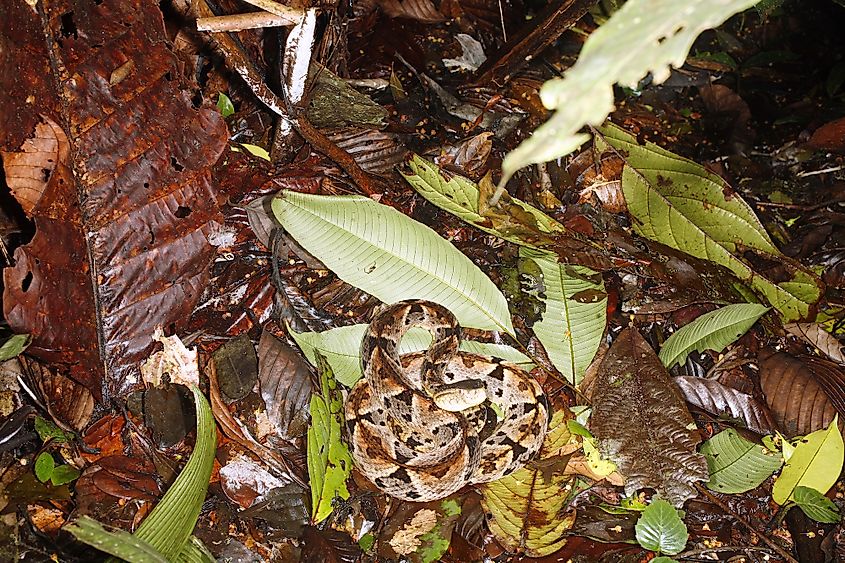
Certain animals also like this region as an area to forage for insects, with these insect-eaters hunted by larger predators like jaguars.
As a result of rivers running through the area, the forest floor can feature unique freshwater habitats. For instance, the pink river dolphin, a species which is one of the few known freshwater dolphins in the entire world.
Where Are Rainforests Found?
Rainforests can be found basically everywhere except Antarctica. The largest ones on this planet are situated near the famous Amazon River in South America and the Congo River in Africa. As well, scientists have found the balmy islands of Southeast Asia and portions of Australia to be ideal regions for the type of climate required to house and sustain these ecosystems. Colder rainforests can be found in America's northwest region, and even in the north of Europe.
The monsoon trough, otherwise referred to as the intertropical convergence zone, is an area where winds from the north and south meet, creating heavy winds and rainfall. This area plays a key role in maintaining the conditions needed to continue the existence of the Earth's tropical rainforests.
The two types of rainforests, tropical and temperate, vary in their location. Tropical forests are found in a band around the equator, between the Tropics of Capricorn and Cancer. Temperate rainforests, on the other hand, are found stretched across the pacific coast of the USA and Canada as well as in the United Kingdom, Chile, Tasmania, New Zealand, and Norway. These ecosystems tend to be colder, though they remain just as humid as their tropical counterparts.
The Amazon Rainforest is the Earth's most massive tropical rainforest. The forest spans through the basin of the previously mentioned Amazon river (which itself is the world's second-longest river) and houses about 20% of the planet's plants and birds, with 10% of mammal types found there.
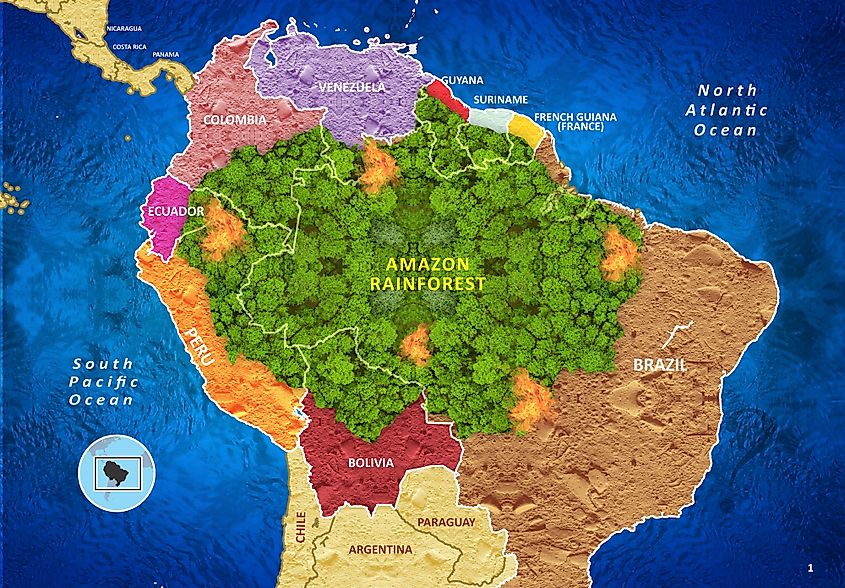
The African Rainforests, on the other hand, are found near Central Africa and come in as the second-largest tropical ecosystems in the world. The neighboring area of Madagascar was once heavily forested but through human expansion, it has mostly disappeared. Africa still holds many zones of high cloud forest, flooded forests, and mangrove swamps.
The Asian Rainforests, go all the way from western India and Burma to the Borneo and Java islands in the eastern region. Bangladesh has the highest concentration of mangrove forests, globally. The location of these rainforests in this area makes sense given how hot and humid Southeast Asia can be. Mainland Asia features a close to tropical climate, that varies between heavy and fierce monsoon rains and dryer, parched periods.
Lastly, there are the Australasian Rainforests. This continent once consisted of Australia, New Guinea, and New Zealand, millions of years ago, entirely cut off from the rest of the world. This area was heavily forested. Today these countries, though split, still have various different species of animals, several of which are uniquely contained to this area online. Typically, undergrowth in Australia's tropical forests is thick and dense. They also are situated right in the corridor where humid winds come in from the Pacific.
Types Of Rainforests
There are two main types of rainforests to consider, with each type sufficiently varied in climate, location, and prevalence of certain plants and animal species.
These are:
Tropical Rainforests
Tropical rainforests are mainly located between the Tropics of Cancer and Capricorn, otherwise known as the tropics area. These include forests in western India, Southeast Asia, Central and South America, the island of New Guinea, and western and central Africa.
These rainforests can contain a top layer of a canopy featuring giant trees that grow. up to staggering heights of 250 feet or more. This uppermost layer prevents too much sunlight from reaching the ground, encouraging the growth of thick, ropey vines. Many of the plants in this biome have been used as common houseplants, as they require minimal sunlight and rain, and can grow in any condition.
In these forests, sunlight tends to come in at a direct, harsh angle, producing a lot of solar energy that maintains a very high temperature in these regions. This temperature can range, typically, from 70 to 85 degrees Fahrenheit.
As a result of these high temperatures, the air is kept at a very humid and hot level, with humidity reaching averages of 77% to 88%. Basically, any humans visiting will be sweating constantly and likely wishing to be free of the muggy, deeply uncomfortable, and bug-infested climate.
The humid air has another knock-on effect on the surrounding weather patterns. Rainfall is the norm, coming down constantly, in frequent bursts of extreme waterfall that verges on monsoon levels of rain. The total rainfall in these regions can range all the way from 80 to 400 inches in a given year, an absolutely towering amount that explains why these rainforests are so aptly named.
Because of the high amounts of sunlight and the rich building blocks of moisture and rain, tropical rainforests house a uniquely diverse range of flora and fauna. It's so diverse that an approximate number from 40 to 100 different species of trees can be found in each hectare.
In fact, these rainforests are easily the most terrestrial animal and plant diverse ecological habitats in the entirety of planet Earth.
The Amazon Rainforest alone contains nearly 1300 types of birds, 3000 fish species, 2.5 million species of insects, 427 different mammals, and around 40,000 plant species. This is only cataloging the ones that have already been found and classified, with millions more estimated to exist in these ecological hotspots.
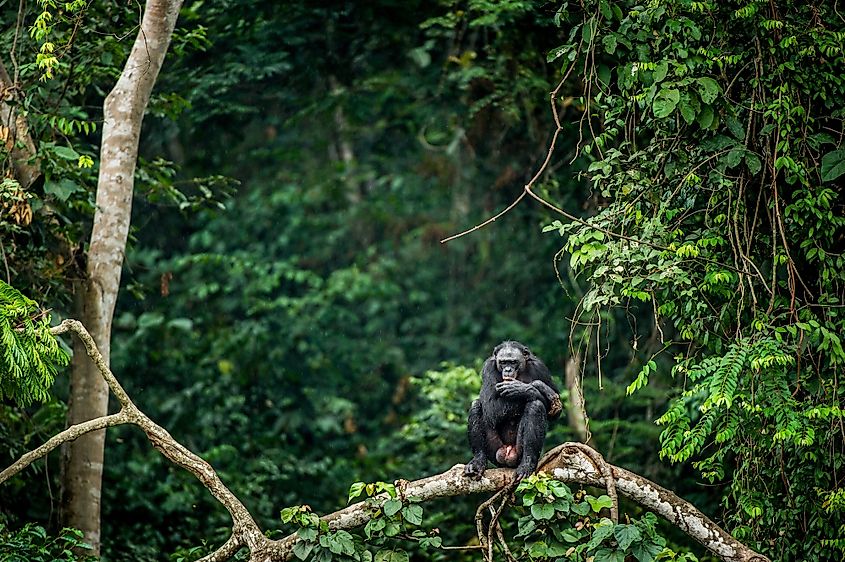
On the forest floor, animals like the okapi can be found. This stand-out mammal species is native to the tropical climes of the Democratic Republic of Congo in Central Africa. They look like zebras but are in reality more closely tied to giraffes, which makes sense once you see their distinctive faces. They tend to feed on tree leaves, buds, and fungi.
Moving up to the understory layer, animals like the infamous jaguar can be found. Their spots are meant to resemble the interplay of shadow and light peeking through the dense canopy, providing them with a built-in camouflage perfect for stalking and capturing their prey. They can typically be found across Central America and in portions of Paraguay and Argentina. They even extend out to Mexico. This is a distinctive, solo, top of the food chain predator that dominates the ecosystems it inhabits.
In the canopy layer, cuter animals can be found like spider monkeys in South and Central America and keel-billed toucans in Latin America. The toucans like to roost in tree holes prevalent throughout this layer and they often like to tuck their beaks and tails under their bodies. Spider monkeys are highly social and live in groups of 30+ individuals.
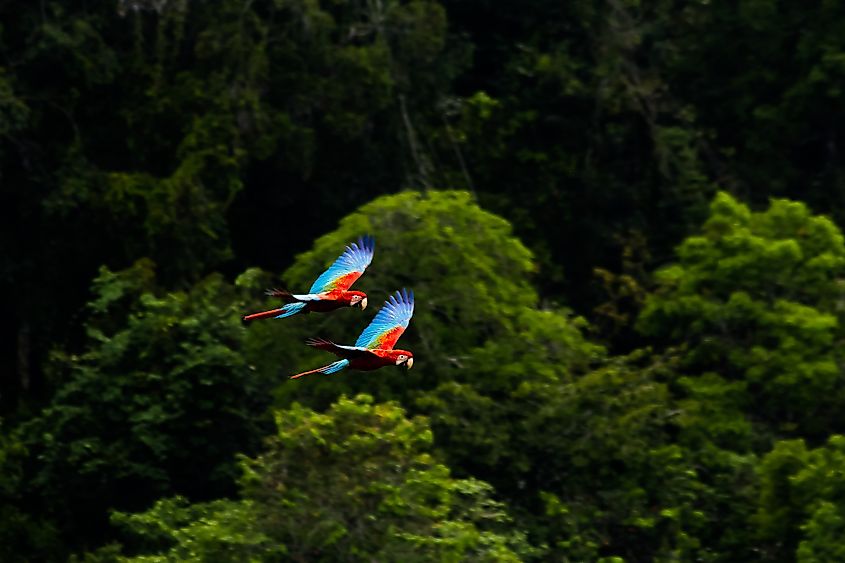
Lastly, on the emergent layer, only the smallest and flightiest of animals can be found. The crowned eagle is one such animal. It is a bird of prey that mainly feeds on animals like primates and lizards. It's a massive bird and ferocious in its hunting patterns - an arbiter of death that is likely the last thing many creatures see before they die.
As for leaves and plants, these tropical rainforests feature many thousands of broad-based leaves at an age of between 50 and 100 years. At the bottom-most layers, decomposition is frequent.
Temperate Rainforests
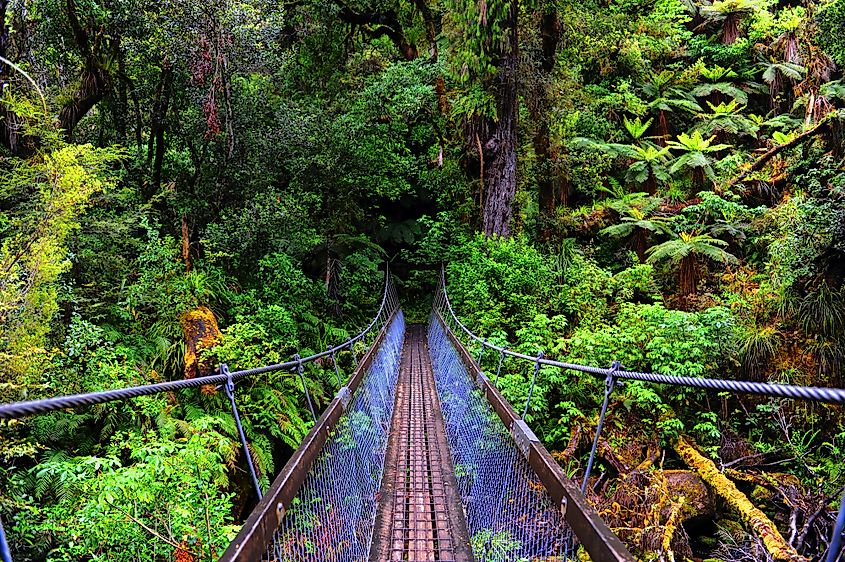
Temperate rainforests mainly vary from tropical rainforests in where they are located. However, as a result of this difference, they actually branch off into completely unrecognizable paths, with a drastically altered climate, and endemic wildlife that is in a completely different sphere of existence.
First, this article will go over its location. Temperate rain-forests are located in the mid-latitudes, an area on earth defined as the zone between the latitudes of 23, 26, 22 and 66, 33, 39 north, and 23, 26, 22 and 66, 33, 39 south. This region features temperature and climates that are much milder than the tropics, and as a result, are considerably more comfortable and accessible for human habitation.
To narrow down the region, even more, temperate rainforests are typically found in mountain-filled areas, located along coasts. This location is critical because these geographic circumstances help to encourage the heavy and frequent rainfall associated with any rainforest.
As for national borders, temperate rainforests can be found along the sealines of the Pacific Northwest in North America, Norway, Japan, southern Australia, New Zealand, Chile, and the United Kingdom.
The name aptly describes their main difference from tropical rainforests. Specifically, that they are much more temperate and comfortable to visit. They're considerably cooler than their tropical counterparts, hitting an average of 50 degrees Fahrenheit to 70 degrees Fahrenheit over any given rain. They are also a lot less sunny and have considerably less rainfall. In fact, they only receive 60 to 200 inches of rain per year, a figure that is half of the tropical rainfall levels at their respective peaks.
Still, the rainfall is higher than many other areas in the world, and this is largely a result of the coastal location. Moist, hot air from the coastal bodies of water push in and become trapped against the nearby mountains. As a result, the conditions for rain are created.
Because of these weather conditions, not as much wildlife can grow and truly prosper, as they can in tropical regions. Temperate rainforests are generally not as biologically diverse as their hotter, more humid cousins, but they have advantages of their own.
Specifically, they host an astounding quantity of biological processes and productivity, with a total storage of up to 500-2000 metric tons of wood, leaves, and other varied organic matter per hectare.
This is possible because the cooler temperatures and less fluctuating climate slow down the processes of decomposition, allowing more material to gather over time. As an example, look at the Pacific Northwest's old-growth forests, which produce three times the biomass (which refers to material that is living or was once living) of comparable tropical rainforests.
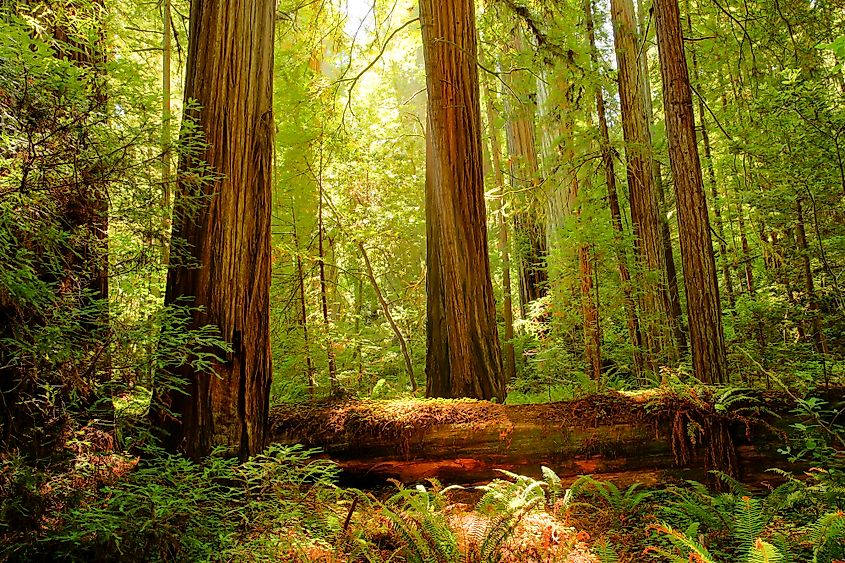
This heavy density of dead and living material means that many plant species can thrive in a never before seen way. As a result, they can often live for longer and grow to even more enormous dimensions than are seen in the tropics. For instance, temperate rainforest trees like the redwood coast in the United States' California, and Chile's alerce, rank among the biggest and most long-living species of tree in the entire world.
As for the animals, it's common to see much more large mammals, though small birds, reptiles, and insects are also common.
Black bears and bobcats are two such apex predators in this area. The black bear is a moderately sized creature, thickset and bulky in its composition. It uses its strong curved claws to tear out roots, logs, and stumps when foraging for food. Meanwhile, bobcats may look like their sister felines, but they are in fact ferocious predators capable of leaping up to 12 feet to capture their prey.
On the smaller side of things, these regions house unique ground and sky dwellers. Chile's rainforests have birds like the Juan Fernández firecrown, a color-changing hummingbird, and the Magellanic woodpecker. Australia is home to creatures like wallabies and bandicoots. They are also the resident habitat of potoroos, adorable small marsupials that currently rank as one of the most endangered animals in the entire region.
Protecting The World's Rainforests
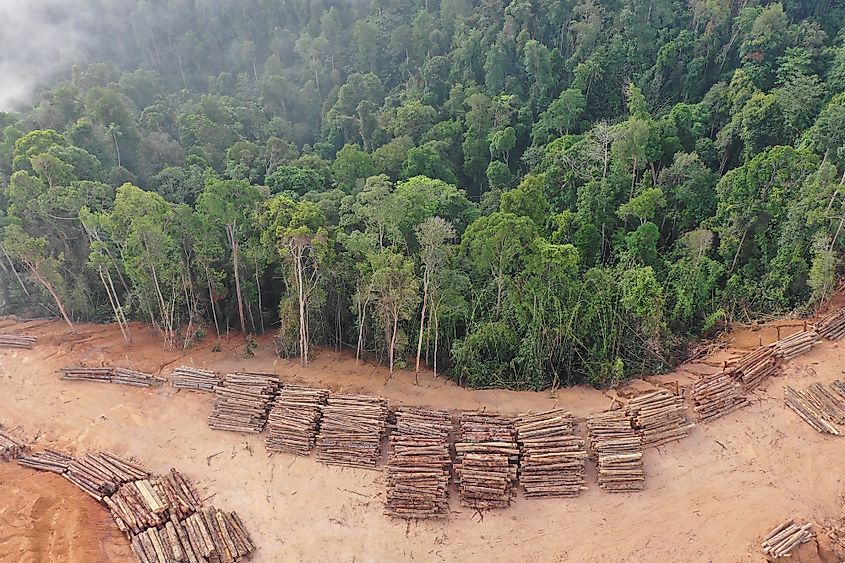
There is so much to learn about rainforests that even the world's top scientists and animal scholars have yet to unearth all there is to know about these humid and hot ecosystems.
From their unique characteristics of heavy rainfall and warm temperature to their varied animal life, rainforests really are a unique ecological habitat that will be hard to replace.
That's why it's important than ever to focus on preservation efforts. Human activity has threatened these majestic sites, and though efforts are being made to reverse these impacts, it may be too little too late.
Losing the rainforests would have dramatic effects on global species diversity, carbon dioxide production, and temperature regulation. Next time you hear about global warming, keep in mind the animals and plants that are still out there to save.











